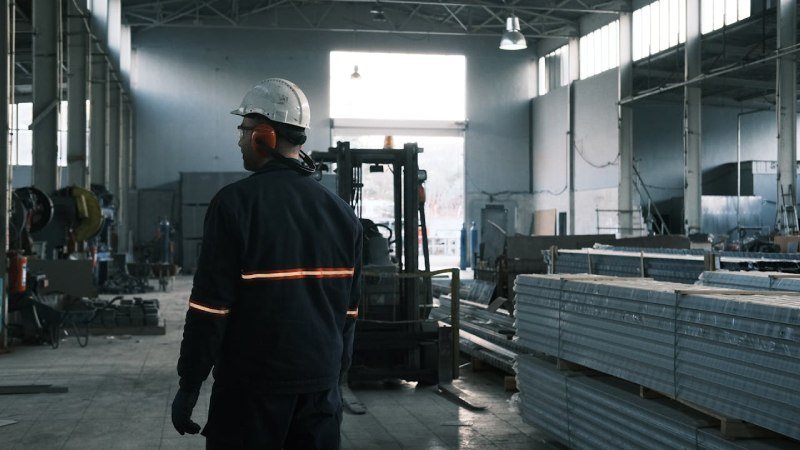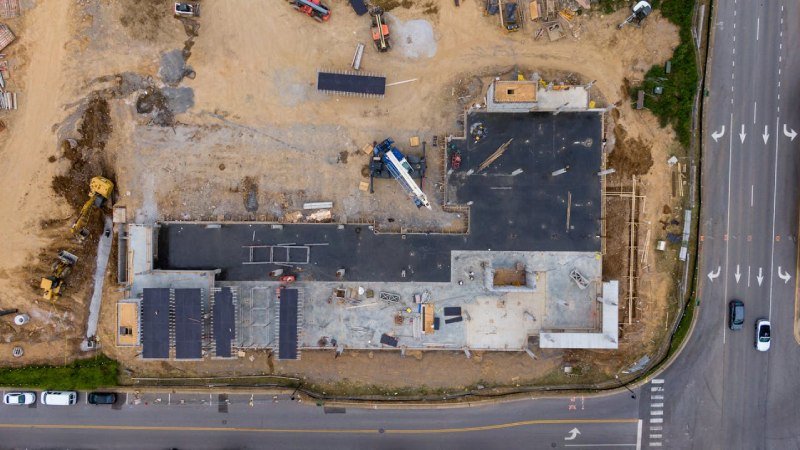
The construction industry, long known for its reliance on traditional methods and manual labor, is undergoing a significant transformation. From skyscrapers to residential homes, the demands on builders and developers have grown more complex, necessitating the adoption of innovative technologies. One of the most transformative changes comes from robotics and drones—technologies that improve efficiency, safety, and overall project management in construction. These advancements are not just the future; they are here now, reshaping how projects are planned, executed, and monitored.
This article explores how robotics and drones revolutionize the construction landscape, offering tangible benefits to workers, project managers, and clients. It delves into the types of equipment used, their advantages, and the industry’s challenges as these technologies become more integrated into everyday construction practices.
The Rise of Robotics in Construction
Robotics in construction refers to using automated machinery and devices that assist in various aspects of construction work. These robots are designed to improve construction processes’ speed, accuracy, and safety. With robotics, construction tasks traditionally performed by manual laborers—such as bricklaying, material handling, and welding—can now be done faster and more efficiently.
Types of Robotics Used in Construction
Bricklaying Robots
One of the most well-known examples of robotics in construction is the bricklaying robot. The Hadrian X is a revolutionary robot capable of laying up to 1,000 bricks an hour surpassing human capacity. The robot uses 3D CAD models to lay bricks with incredible precision, ensuring a more consistent and faster build than traditional methods.
Robotic Arms for Material Handling
Like those seen in factories, robotic arms also make their way onto construction sites. These arms are used for lifting, assembling, and placing heavy materials precisely, reducing the need for cranes and manual laborers. This helps save time and reduce the risk of injury associated with manual material handling.
3D Printing Robots
3D printing in construction is gaining traction, with robots capable of printing entire building components or structures. For example, ICON, a company specializing in 3D printing, has built entire homes using its Vulcan 3D printer. This technology is faster and reduces material waste, making construction more sustainable.
Benefits of Robotics in Construction
The use of robotics in construction provides several key advantages:
- Increased Efficiency: Robots can perform tasks faster than humans, allowing more work to be completed in less time.
- Enhanced Precision: Robotics eliminates human error, ensuring that tasks like bricklaying and material placement are performed accurately.
- Improved Safety: Robots take on dangerous tasks, such as handling heavy materials or working in hazardous conditions, reducing the risk of injuries on the job.
- Cost Reduction: While the initial investment in robotic technology can be high, the long-term savings in labor costs and project timelines can make the investment worthwhile.
Challenges and Barriers
Despite their potential, there are still several challenges to the widespread adoption of robotics in construction. The upfront cost of robotic equipment can be significant, making it difficult for smaller construction firms to adopt. Additionally, there are concerns about workforce displacement, as automation could reduce the need for certain manual jobs. Lastly, integrating robotics with existing construction workflows and training workers to operate new technologies can be daunting for many companies.
Drones: A New Frontier in Construction

Drones, also known as unmanned aerial vehicles (UAVs), have quickly become essential in modern construction. By flying over construction sites and capturing high-quality aerial footage, drones provide invaluable insights that are helping to streamline project management and improve safety protocols.
Uses of Drones in Construction
Site Surveying and Mapping
Drones are increasingly used for surveying construction sites, providing accurate 3D maps and models. With specialized cameras and sensors, drones can fly over a site and capture detailed images, which can then be processed into precise maps. This allows construction managers to evaluate a site’s topography, plan projects more effectively, and identify potential issues early in the planning process.
Progress Monitoring and Inspections
During construction, drones can monitor a project’s progress in real time. By capturing aerial footage regularly, drones allow project managers to track the timeline, ensuring that the work is progressing as scheduled. Drones are also used for inspections, particularly in difficult-to-reach areas such as rooftops and towers. This eliminates the need for scaffolding or climbing, reducing the risk to workers.
Safety Inspections
Drones are also making construction sites safer by reducing the need for workers to perform dangerous inspections. For example, drones can inspect cranes, scaffolding, and other high structures, providing real-time feedback to project managers without putting workers in harm’s way.
Advantages of Drones
The integration of drones into construction projects provides a range of benefits:
- Faster Data Collection: Drones can capture aerial data in a fraction of the time it would take with traditional surveying methods.
- Improved Accuracy: Drones offer more accurate measurements and real-time data, reducing errors and ensuring a more precise construction process.
- Enhanced Safety: Drones help minimize the risk of accidents and injuries on the job site by replacing manual inspections in hazardous locations.
- Cost Efficiency: Drones reduce the need for expensive equipment, such as helicopters for aerial surveys, and the labor costs associated with manual inspections.
Limitations and Concerns
While drones offer significant advantages, their widespread use in construction also presents challenges. Regulatory issues, such as airspace restrictions and certification requirements for drone operators, can complicate their integration. Additionally, drones may struggle in certain weather conditions or environments, such as high winds or dense urban areas, limiting their effectiveness in some situations.
Case Studies: Successful Integration of Robotics and Drones
Several construction projects worldwide have successfully integrated robotics and drones, showcasing their potential to enhance efficiency and reduce costs.
Robotics in Action
One prominent example of robotics in construction is the BIM 360 project, where robotic systems were used to help automate the building of a commercial facility. Robots were used for repetitive tasks such as material handling and assembly, leading to a more streamlined construction process and faster project completion. Additionally, using robots helped reduce errors that typically arise from human labor, such as misalignments and mistakes in placing materials.
Drone Applications
Drones have been used extensively in large-scale infrastructure projects for progress monitoring and inspections. For instance, drones were employed in the construction of the One World Trade Center in New York to monitor construction progress and perform aerial surveys of the building’s exterior. Using drones allowed project managers to track progress more efficiently, identify potential issues early, and reduce the need for costly scaffolding and equipment. Additionally, companies often turn to reliable forklift hire services for material handling to move heavy loads efficiently, ensuring smooth project timelines and minimizing delays.
These examples highlight the substantial impact that robotics and drones can have on construction projects, increasing efficiency, reducing costs, and improving safety.
The Future of Robotics and Drones in Construction
The future of robotics and drones in construction is promising, with continued advancements on the horizon. Emerging trends in the industry suggest that robots and drones will become even more sophisticated, incorporating artificial intelligence (AI), machine learning, and the Internet of Things (IoT) to further enhance their capabilities.
Emerging Trends and Innovations
In the coming years, we can expect to see increased integration of AI with robotics. AI can enable robots to make real-time decisions based on their environment, improving accuracy and reducing the need for human intervention. Additionally, using autonomous drones that can navigate construction sites without manual control is becoming more common, offering even greater efficiency.
The Integration of Robotics and Drones with IoT
Combining robotics and drones with IoT technology will allow for a seamless data flow across the construction site. Sensors embedded in equipment could communicate with drones and robots to provide real-time updates on material usage, worker productivity, and potential issues.
Barriers to Widespread Adoption
While the future is promising, there are still barriers to the widespread adoption of robotics and drones in construction. Regulatory hurdles, such as government restrictions on drone usage and the high cost of technology, remain significant challenges. Additionally, many construction companies may face difficulties training their workforce to operate these new technologies effectively.
Conclusion
Integrating robotics and drones into the construction industry revolutionizes how projects are managed, built, and delivered. From robotic bricklayers to autonomous drones surveying job sites, these innovations are improving efficiency, reducing errors, and enhancing safety on construction sites. While challenges remain, the potential benefits make these technologies indispensable for the future of construction. As the industry continues to evolve, embracing robotics and drones will be essential for companies looking to stay competitive and meet the demands of modern construction. The future of construction is undoubtedly smart, and those who adapt to these innovations will lead the way forward.